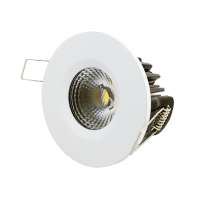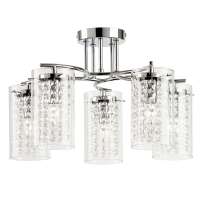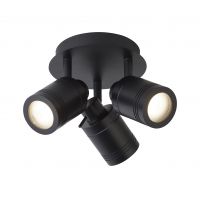Why should you choose My Green Lighting?
My Green Lighting is proud of our levels of customer service, both before and after a sale. If you need advice about which product is right for you, just give us a call and we'll talk through the options with you. We'll never sell you a product that we don't think is right for your requirements.
If you're looking for something that you can't find on the site, we can probably track it down for you. Our previous requests have ranged from a single spot light, to a light fitting to install at the bottom of a well!
Once you have placed an order with us, it's often dispatched the same day. The exact time for dispatch is not guaranteed so if you need a delivery by a specific date please get in touch.
If we know an item is out of stock, our website will make it clear and provide an option to be notified when it's back in stock again.
If there's a problem with your purchase, we offer an easy process of problem solving. This might mean that we send a replacement product, provide more information, or offer a refund, either way - we'll put it right.
Above all, we're a friendly company who can offer honest simple advice, backed up with top quality service.
What is an energy saving bulb?
Low energy lighting, or an energy saving light source, is one that produces more light for less power, which results in lower running costs.
What are the options?
There are a variety of energy saving lights available. The most common choice at the moment is to use LEDs for all types of lighting. Previously you might have considered compact fluorescent light bulbs but these have now been superceded by modern LED options..
LED for the greatest light output
LED bulbs have been around for quite a long time now. For 'standard' bulb shapes (e.g. GLS, candle etc) they are currently the best choice for energy efficient lighting as they produce lots of light and use approximately 90% less power than traditional incandescent bulbs. This corresponds to an 90% reduction in your running costs.
Low energy lighting and the building regulations
More than 25% of the electricity in an average house could be used up by lighting.
Part L of the current building regulations requires a certain percentage of lighting in new homes and extensions to be low energy. It defines a minimum number of Lumens per watt - most of our low energy lighting and bulbs and lamps will meet if not exceed this requirement but give us a call if you have any doubts or questions.
Some UK building regulations, such as the Code for Sustainable Homes also state that in all new homes and extensions, a percentage of all the habitable rooms must have dedicated low energy lighting.
Installing a dedicated energy saving light fitting is a step further than just using low energy light bulbs. It means that the fitting will only accept low energy bulbs so it's physically impossible to install a normal incandescent bulb because the lamp holder has a different type of connector.
There are a variety of lamp holders and lamp caps that are used solely for energy saving light bulbs. We have a page that shows the different types of lamp caps in common use.
Where should we buy energy saving bulbs?
Everywhere! This might not always be possible as there are still a few limitations to the way the systems work but we have solutions for most applications.
How do I use energy saving fittings?
A low energy light fitting is installed in exactly the same way as any other light fitting. You don't need any extra wiring or equipment.
Energy saving - electrical installation
As with all electrical work, we recommend that you employ a qualified electrician to do the installation. However, there are many cases where simply replacing the bulbs in your current fittings will make the greatest difference to your pocket.
If you need a junction boxes, then we would recommend using Wiska Box enclosures and their accessories.
Where can I buy more efficient bulbs and fittings?
Right here! You're in the right place - you can browse our low energy products using the category pictures at the top of this page.
My Green Lighting is the UK's leading retailer of dedicated energy saving fittings.
Energy saving dimmable LED downlights
Energy saving downlights are a very popular type of light fitting. They are neat, unobtrusive and can provide a good level of light. Unfortunately
they can also use a lot of electricity if they have incandescent bulbs installed. Don’t despair! - there are many options that are much more energy efficient.
Before you can decide on the best ways to improve the energy efficiency of your recessed downlights, you need to know what you already
have. Historically there have been 3 main types of downlight: low voltage halogen, mains voltage halogen and screw fit tungsten
bulbs. The easiest way to tell which you already have is to take out one of the bulbs and have a look at the connector.
Low voltage bulbs have a push in connector, with two (usually quite sharp) pins.
These bulbs run at 12 volts rather than the mains voltage of 230 volts. This means that there also has to be a
transformer somewhere. Some installations have one transformer per light fitting and some other one transformer
running multiple lights.
12v isn't necessarily saving you energy
Some people don't know that low voltage is not the same as low energy. It isn’t. Energy is measured in watts which is what you pay for. Low voltage bulbs still run at the same number of watts as a mains voltage bulb. Remember - it’s the watts that count not the volts.
Mains voltage halogen bulbs, also known as GU10 have a ‘twist and lock’ connector. There are two pins on the bulb with ‘feet’ on them.
Main voltage GU10 bulbs used to be incandescent halogen lamps rated at either 20w, 35w or 50w.
These days, the most efficient energy saving replacements for these are now LED spot bulbs, which are available in a wide range of wattages, beam angles and colours (shades of white and actual colour). Modern LED lamps use much less power than the old incandescents and can also produce more light.

























